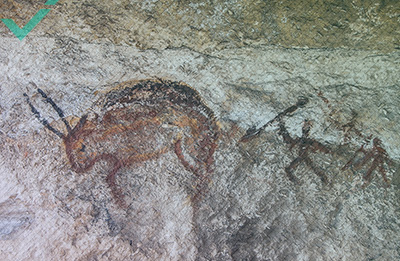Search engine optimization (SEO) is boosted a great deal by producing video content. Many consumers enjoy having information conveyed to them visually. There’s just something that sticks in one’s head about a well-crafted video piece, especially when stumbled upon by chance. Have you ever harbored dreams of being a filmmaker? Producing video content is a way for you to develop your craft and further brand awareness at the same time. But how do you create a digestible, enjoyable viewing experience that communicates the information you want?
The successful YouTuber CGP Grey responded to a query about how to grow an audience. Given his more than 3 million subscribers, with his most popular video viewed 11 million times, he’d be a good content creator to ask. His answer was disarmingly simple; “Make videos that people want to watch”. This seems like obvious advice, yet it is so often overlooked. With unlimited options for online entertainment, what will make people click on your video? And what will hold their attention for its duration? Here are 10 tips for making your videos watchable and engaging to a larger audience.
1: TELL A STORY
Want to know what’s great about a visual storytelling medium? You get to tell a story, visually. Again, this sounds obvious, but then how come it’s overlooked? If you have to produce a video on some dry, technical aspect of your work, is there a more entertaining way to “show” rather than “tell” the information you need to convey? For example, could there be a short film with characters in a situation that explains the real world impact of your topic?
You can write a narrative that’s one minute long. There’s even a YouTube channel called Five Second Films where, as the name suggests, creators make stories that last five seconds. Stories typically set up a location or world. They introduce characters who have something important at stake. They present an external or internal conflict for characters to overcome (often both). Is there a positive resolution to this conflict by the end? A negative one? A comical one? Or a surprising twist? Rely more on visuals than on dialogue and you’ve got yourself visual storytelling.
2: EVOKE EMOTION
If you’re telling a story, keep in mind what you want the viewer to understand by the end. And arguably more important, keep in mind how you want the viewer to feel. Before they click on the video, what is it about your title, thumbnail, and content that will make them curious? As they watch your video, what should they feel? After they watch the video, what should they feel? Or do? Are you noticing a pattern of advice that’s simple, yet not commonly followed?
Watching a film, TV show, or video is primarily an emotional experience. Have a concept of what emotion you want to hit home and it’ll help focus your work. Once a viewer relates an emotional experience to your video, that association will stay with your brand. Emotional experiences will provoke a more visceral memory than absorbing blandly presented information.
3: HAVE GOOD SOUND
Sound is such a neglected part of the commercial video production process. Ask anyone who has worked as a sound recordist in the film industry; you’re working in an audio-visual storytelling medium, not just a visual storytelling medium – unless your concept is a silent film. Even then, silent films tend to have accompanying music to enhance the viewing experience. Ever seen a video where the music was too loud and drowned out the voices? Or wasn’t chosen well?
How about videos where you can barely hear people talking because of background noise? Videos with weak or distorted sound levels are a pain to endure. Hence, people often turn a video off or move on if the sound is irritating. Film festival audiences, for example, tend to be more forgiving of a roughly shot film if it has clear sound, good writing, and good acting. This sounds counterintuitive because of the importance of strong visuals. Budgetary limitations on how your content looks won’t necessarily turn people away as long as they can keep track of the story you’re telling. Make it a good story and have a decent microphone to record sound for it.

4: USE COLOUR WELL
Strong visuals should not be underestimated. You can do a lot with clear sound and well-conceived content. But why not maximize your chances of success? There are plenty of filmmaking channels on YouTube & Vimeo with tutorials on proper framing, lighting, and other technical aspects of visual storytelling. Color is an important aspect to learn. So much can be conveyed with a change in hue.
Even with low production value, a well-chosen location and good art direction can make your video rewarding to look at. After all, the images are often what stick in people’s heads afterwards. They also present opportunities for attention-grabbing publicity images and video thumbnails. It is advisable to have a stills photographer take good photos on set too. And looking back over your footage and images, you can always touch up the colour digitally afterwards, even with consumer software. Get learning; through practice, it’ll come to you.
5: USE FACES WELL
So you need a well-told story with emotional impact? And it needs to be visually memorable in some way? Stories are compelling to people because of the characters. And whether in live-action or animation, characters tend to have faces. The human face and the range of emotion it can express draws people in like nothing else. It’s why actors are so highly praised and some of the most famous are overpaid.
Communicating a message through emotional processing on a face can really hit home. There are many examples of ads, commercials, and marketing campaigns centred around a character. Maybe it’s a known actor brought in; maybe it’s a cartoon designed from scratch. In either case, how they look and behave will communicate the association you want people to make with your brand. So make good use of faces for memorable visuals and emotional impact.
6: KEEP UP MOMENTUM
We could advise, “Don’t use more words than you have to in order to get a point across”. If we said “Get to the point”, that tells you the same thing, quicker. Brevity is the soul of wit. Write sharp, concise copy that makes your point with succinct language. Move on to the next point quickly. There needs to be momentum in order for a viewer to stay engrossed. If a video’s moving too slowly, they’ll get bored and stop watching.
A video’s pace, however, can also be too fast. If you’re bombarding the viewer with information without enough time for it to sink in, they won’t engage. They’ll resent the aggressive pace with which the video presses on, and will stop watching. Try to find a balance between the two, unless you have a strong, creative reason to play with pacing. Bill Wurtz’s “history of the entire world, I guess” went super-viral with over 37 million views. It goes through highlights of world history in under 20 minutes. It’s very fast-paced, but the visuals, simple language, and bizarre music were charming and engaged people.
How do you even play around with pacing? The choice of music and how fast it is will set the mood. There is also the strength of your visuals and how quickly you cut from one to another. If your video is one continuous shot, there should either be camera movement or subject action that is active and revealing. If you have many shots to edit together, changing shots quickly keeps the visuals captivating. Changing them too quickly is frustrating to watch. Find the balance, vary the visuals, and you should have a video people can’t look away from.
7: USE HUMOUR
Many videos go viral because of good use of comedy. You remember funny jokes you’ve been told, savage punchlines from comedians, quotes from The Simpsons, and so on. Making people laugh is literally good for their health. It also creates a happy association with the source of the humour. You could be really onto something if you have a sketch that gives people something to remember about your brand. The bad news is that humour is very difficult to do well.
We all have a different sense of humour, and pitching humour at a level where it reaches a wide audience is tough. Thinking about the audience you’re trying to target and what their sensibilities are is crucial. After all, you are trying to communicate something with your sketch. What do you want your audience to do? Is it clear from what you wrote? Don’t lose sight of that. And consult people honest enough to tell you whether the video’s good enough for public release.

8: USE CAPTIONS
Captions written by humans, we should stress. Many streaming sites will generate subtitles, but they often make mistakes. Put the time and care into having a real person write your subtitles. This will allow the hard of hearing to enjoy your video content, or those watching your video on mute. The visuals of the video itself can incorporate captions too. Clear, big, legible text that stands out from the background can add strong visuals and be used creatively. It kind of undermines the previous rule about not relying too much on words to convey story. But if the words are punchy and effective at making a point, play around with that.
9: MAKE A CALL TO ACTION
Your video can be heightened by outstanding content through a strong narrative, emotional resonance, clean sound, impactful visuals, and well-judged tone. But what are you doing it all for? Keep in mind that you’re not only looking to create an emotional connection with your video; you’re looking for that connection to motivate action on your audience’s part. Either tell them what that is, or offer them options instantly. This requires the same careful planning as the aforementioned.
Have you made the best video about how awesome your product is? Where and how can people get it? If it’s online, make the process convenient and “a click away”. Have you laid out the stark urgency of an important social issue? Is there a constructive action people can take to act on their pent-up emotion? Is there more content you want people to look at? Get interactive with the features video sites provide. For example, YouTube lets you place links over the video itself. If your content was good enough, the viewer will be curious enough to click on your next video.
10: OFFER MORE
Once you have released a video and you have the views coming in, what then? Your video was your signal to an audience that needed to hear your message. You got the message out there. How are you acting on the message? It’s not all about what the audience does. Do you have more video content on its way? There’s one compelling reason to tell people to subscribe. Has your video talked-up the potential of your business? Work hard to realize that potential. Are you running thoughtful social media campaigns your viewers should follow? Are you promoting events that offer a valuable, exciting experience?
Video content will help your business be discovered and establish a brand. What you do with that brand will impact the level of confidence and trust consumers have. Are you offering more than a product, service, or experience? Is there a view of the world behind your objectives? Is there a vision for improving life that resonates with people? Your videos, however well-produced, are making promises you’ll have to deliver on. Having ideas ready for other ways viewers can support your business will come easier when you have the priorities for your business straight. Then you’ll discover the emotional connections that make people actually want to support you. Good luck and get going!

